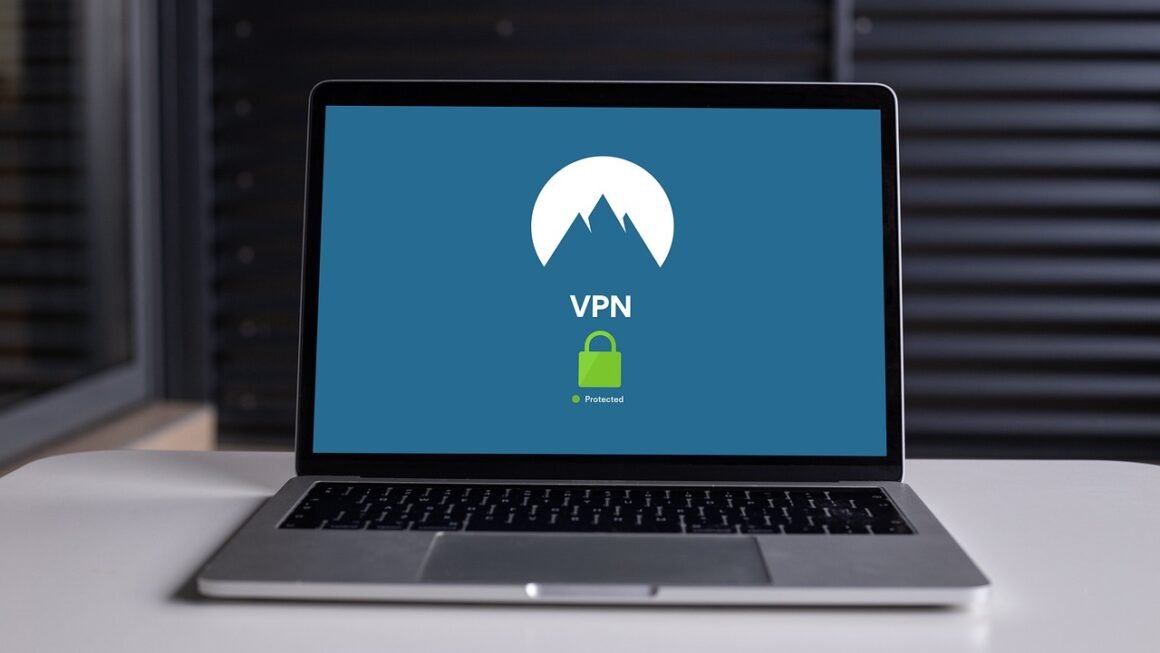Threat hunting. Just hearing those two words evokes images of highly skilled cybersecurity professionals relentlessly pursuing elusive adversaries within the digital landscape. But threat hunting is more than just a cool term; it’s a proactive approach to cybersecurity that goes beyond automated defenses, actively searching for malicious activities that might slip past the standard security net. This blog post will delve into the world of threat hunting, exploring its key components, benefits, and how you can implement it within your organization.
What is Threat Hunting?
Defining Threat Hunting
Threat hunting is a cybersecurity practice focused on proactively searching for threats that evade existing security measures. Unlike reactive incident response, threat hunting assumes that breaches have already occurred or are in progress and leverages human intuition, data analysis, and specialized tools to uncover these hidden threats. It’s a continuous process of exploring data, developing hypotheses, and validating or refuting them.
- Proactive vs. Reactive: Threat hunting is proactive, while incident response is reactive.
- Human-Driven: Relies heavily on the skills and knowledge of threat hunters.
- Data-Centric: Uses various data sources like logs, network traffic, and endpoint activity.
- Hypothesis-Based: Begins with a hypothesis about potential malicious activity.
Why is Threat Hunting Important?
Traditional security solutions like firewalls, intrusion detection systems (IDS), and antivirus software rely on known signatures and patterns to identify threats. However, sophisticated attackers are adept at using advanced techniques, such as:
- Fileless malware: Malware that operates in memory, leaving minimal traces on disk.
- Living off the land (LOTL) attacks: Using legitimate system tools for malicious purposes.
- Polymorphic malware: Malware that constantly changes its signature to evade detection.
- Zero-day exploits: Exploits that target previously unknown vulnerabilities.
These techniques allow attackers to bypass traditional defenses. Threat hunting complements existing security measures by proactively identifying these advanced threats that might otherwise go undetected, reducing dwell time (the time an attacker remains undetected within a system) and minimizing potential damage. Recent studies suggest that organizations with mature threat hunting programs experience significantly shorter dwell times compared to those that rely solely on reactive security measures.
The Threat Hunting Process
Defining Objectives and Scope
Before embarking on a threat hunt, it’s crucial to define clear objectives and scope. This includes:
- Identifying target assets: Which systems, networks, or applications will be the focus of the hunt?
- Defining threat models: What types of threats are most likely to target the organization? (e.g., ransomware, data exfiltration, insider threats)
- Determining data sources: What data will be used to support the hunt? (e.g., security information and event management (SIEM) logs, endpoint detection and response (EDR) data, network traffic analysis (NTA) data)
- Example: An organization may choose to focus a threat hunt on identifying potential insider threats targeting sensitive customer data. The scope would include servers and databases containing customer information, and the data sources would include access logs, file activity monitoring data, and user behavior analytics (UBA) output.
Developing Hypotheses
Threat hunting is driven by hypotheses, which are educated guesses about potential malicious activity. Hypotheses are based on:
- Threat intelligence: Information about known threats, attack techniques, and attacker motivations.
- Security alerts: Anomalies or suspicious events flagged by security tools.
- Past incidents: Lessons learned from previous security breaches.
- Understanding of the organization’s environment: Knowledge of normal system behavior and potential vulnerabilities.
- Example: A hypothesis might be, “An attacker is using PowerShell to download and execute malicious code on employee workstations.”
Investigating and Validating Hypotheses
Once a hypothesis is developed, the next step is to investigate and validate it using available data and tools. This involves:
- Data analysis: Analyzing logs, network traffic, and endpoint activity to identify patterns or anomalies.
- Using threat hunting tools: Employing specialized tools like SIEMs, EDR solutions, and network analysis tools to search for specific indicators of compromise (IOCs) or suspicious behavior.
- Correlation: Connecting different data points to build a more complete picture of the potential threat.
- Example: To validate the PowerShell hypothesis, a threat hunter might use an EDR solution to search for PowerShell processes that are downloading files from external sources or executing suspicious commands.
Refining and Automating the Process
The threat hunting process is iterative. As new information is discovered, the hypothesis may need to be refined, or new hypotheses may need to be developed. Successful threat hunts should be documented and used to improve future hunts. Consider automating aspects of the threat hunting process, such as:
- Creating custom alerts: Configure security tools to automatically flag suspicious events that are relevant to specific threat models.
- Developing playbooks: Document the steps involved in investigating specific types of threats.
- Integrating threat intelligence: Automatically enrich security data with threat intelligence feeds to identify known IOCs.
Essential Tools for Threat Hunting
Security Information and Event Management (SIEM)
SIEM systems collect and analyze security logs from various sources across the organization, providing a centralized platform for threat detection and investigation. Key features of a SIEM for threat hunting include:
- Log aggregation: Collecting logs from firewalls, servers, endpoints, and applications.
- Correlation: Identifying relationships between different security events.
- Alerting: Notifying security teams of suspicious activity.
- Reporting: Generating reports on security trends and incidents.
Endpoint Detection and Response (EDR)
EDR solutions provide visibility into endpoint activity, allowing threat hunters to detect and respond to threats on individual devices. Key features of an EDR for threat hunting include:
- Real-time monitoring: Tracking processes, file activity, and network connections on endpoints.
- Behavioral analysis: Identifying suspicious behavior based on machine learning and anomaly detection.
- Threat intelligence integration: Correlating endpoint activity with known IOCs.
- Remote response capabilities: Allowing security teams to isolate infected endpoints and remediate threats remotely.
Network Traffic Analysis (NTA)
NTA tools analyze network traffic to identify malicious activity. Key features of an NTA for threat hunting include:
- Packet capture and analysis: Capturing and analyzing network traffic to identify suspicious patterns.
- Anomaly detection: Identifying deviations from normal network behavior.
- Protocol analysis: Examining network protocols to identify potential vulnerabilities or misconfigurations.
- Threat intelligence integration: Correlating network traffic with known IOCs.
User and Entity Behavior Analytics (UEBA)
UEBA solutions analyze user and entity behavior to identify anomalies that may indicate malicious activity or insider threats. Key features of a UEBA for threat hunting include:
- Behavioral profiling: Establishing a baseline of normal user and entity behavior.
- Anomaly detection: Identifying deviations from the baseline.
- Risk scoring: Assigning risk scores to users and entities based on their behavior.
- Integration with other security tools: Providing context to security alerts from other systems.
Building a Threat Hunting Team
Skills and Qualifications
A successful threat hunting team requires individuals with a diverse set of skills and qualifications, including:
- Security expertise: A deep understanding of cybersecurity principles, attack techniques, and security tools.
- Data analysis skills: The ability to analyze large datasets and identify patterns or anomalies.
- Threat intelligence expertise: Knowledge of threat actors, their motivations, and their tactics, techniques, and procedures (TTPs).
- Programming and scripting skills: The ability to write scripts to automate tasks and analyze data.
- Communication skills: The ability to effectively communicate findings to other security teams and stakeholders.
Team Structure and Roles
A threat hunting team can be structured in various ways, depending on the size and complexity of the organization. Common roles include:
- Threat Hunter: Conducts proactive threat hunts based on threat intelligence and hypotheses.
- Security Analyst: Investigates security alerts and provides support to threat hunters.
- Data Scientist: Develops and maintains data analysis tools and models.
- Threat Intelligence Analyst: Collects and analyzes threat intelligence to inform threat hunting activities.
Training and Development
Continuous training and development are essential for keeping threat hunters up-to-date on the latest threats and techniques. This includes:
- Attending industry conferences and workshops.
- Participating in training courses on threat hunting techniques and tools.
- Conducting regular tabletop exercises and simulations.
- Sharing knowledge and best practices within the team.
Best Practices for Effective Threat Hunting
Focus on High-Value Assets
Prioritize threat hunts on systems and data that are critical to the organization’s business operations. This includes:
- Critical servers and databases.
- Sensitive data repositories.
- Key network infrastructure.
Document Everything
Maintain detailed records of all threat hunts, including:
- The hypothesis being investigated.
- The data sources used.
- The tools and techniques employed.
- The findings of the hunt.
This documentation will be valuable for future hunts and can also be used to improve security processes.
Collaborate and Share Information
Share threat intelligence and findings with other security teams and stakeholders. This will help to improve the organization’s overall security posture.
- Share information with incident response teams.
- Share threat intelligence with other organizations in the industry.
- Contribute to open-source threat intelligence projects.
Measure and Improve
Track key metrics to measure the effectiveness of the threat hunting program. This includes:
- Number of threats identified.
- Dwell time of identified threats.
- Cost savings resulting from threat hunting activities.*
Use these metrics to identify areas for improvement and optimize the threat hunting process.
Conclusion
Threat hunting is a crucial component of a modern cybersecurity strategy. By proactively searching for hidden threats, organizations can reduce dwell time, minimize damage, and improve their overall security posture. Implementing an effective threat hunting program requires a combination of skilled personnel, specialized tools, and well-defined processes. By following the best practices outlined in this blog post, you can build a robust threat hunting capability that will help to protect your organization from advanced cyber threats. Take action today to enhance your security defenses and proactively hunt for threats within your environment.



